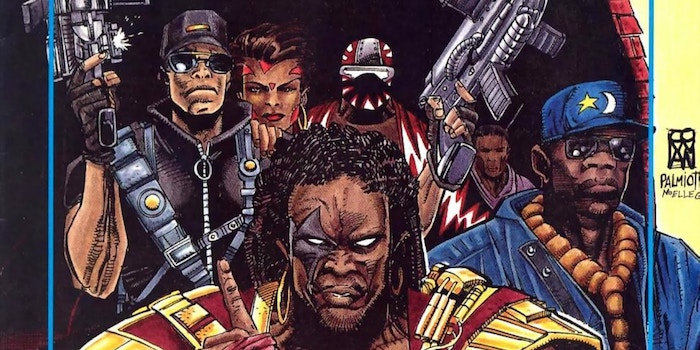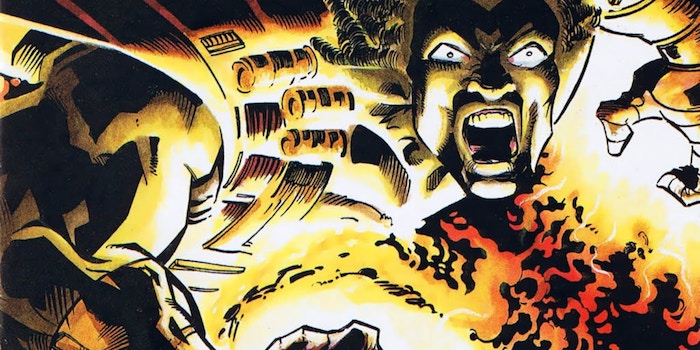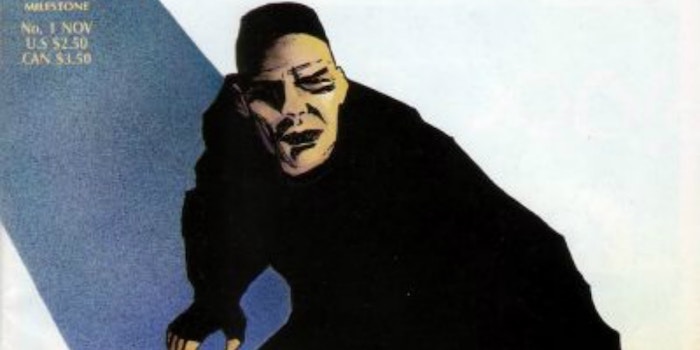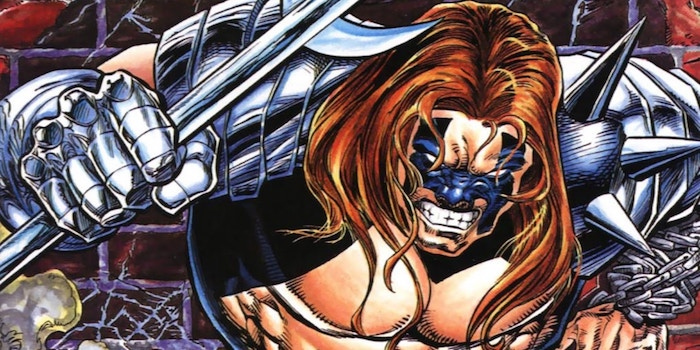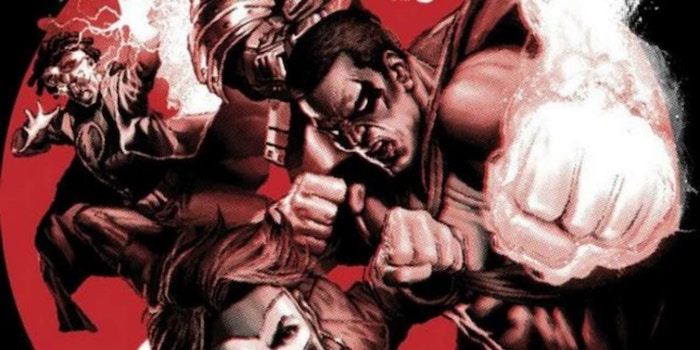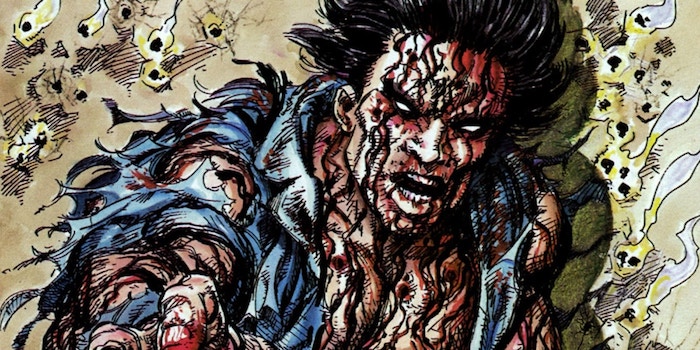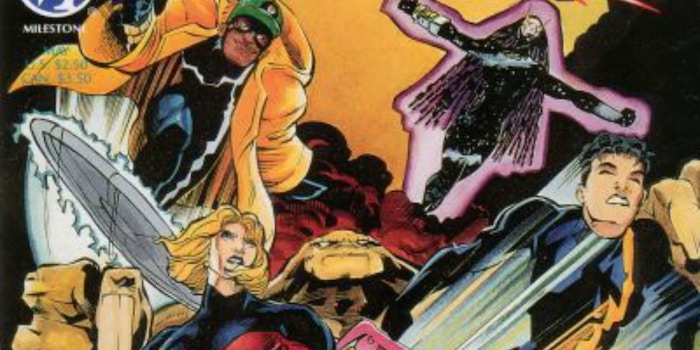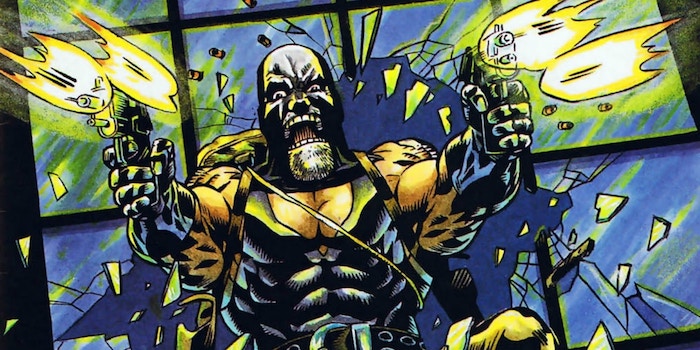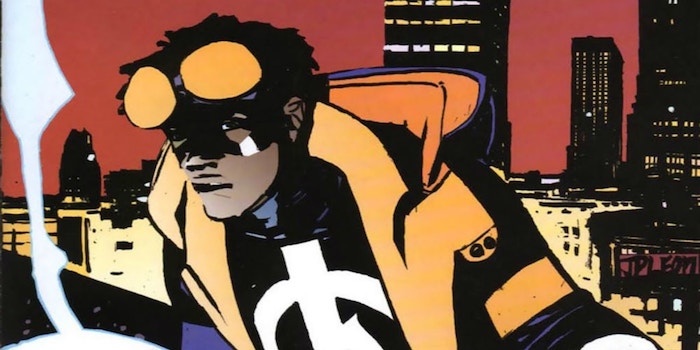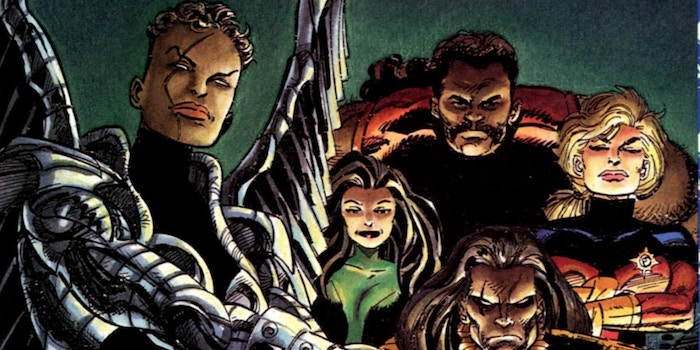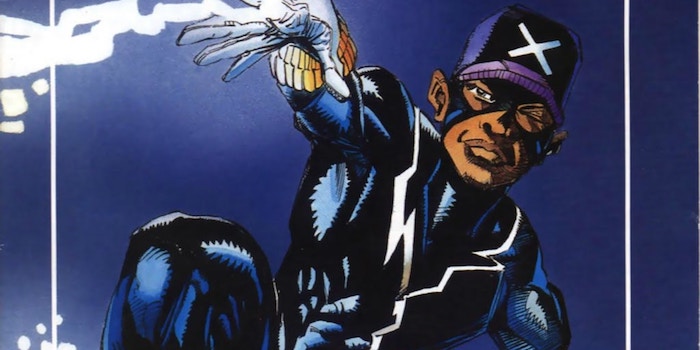MILES AHEAD OF THE REST: THE 15 BEST MILESTONE COMICS
In 1993, Milestone Media (distributed by DC) launched a new series of comics set in its own unique universe. Milestone comics took place in the fictional city of Dakota. During an epic battle between street gangs known as the Big Bang, police used an experimental gas that ended up killing most of the gang members there. The ones who survived gained superhuman powers. It’s in the world of the so-called “Bang Babies” that most of the comics were set.
One of the mandates of Milestone was that it presented more people of color than other comics at the time. All their headline books like “Icon” and “Static” had African-American main characters. With minority artists and writers producing it, they simply wanted to reflect a more diverse world they felt had been excluded from mainstream comics. Unfortunately, Milestone suffered from the perception that their creations were just “comics for blacks.” Milestone also launched at the end of the comic boom, which led to a crash in 1994. With a possible revival of Milestone coming, CBR is running down all their industry-changing comics.
15. Blood Syndicate
“Blood Syndicate” was Milestone’s take on the superhero team, but with a very different slant. Blood Syndicate was a street gang that survived the Big Bang and escaped with enormous power. “Blood Syndicate” reflected a more diverse cast than most comics of the time. The team was a mix of Asian, African-American, and Latino characters. The team also had a different sensibility than other teams. A gang from before the Big Bang, Blood Syndicate wasn’t driven by a desire to right wrongs and bring justice, so much as make money and protect their turf.
They also clashed with each other in ways that went beyond the good-natured bickering of teams like the Fantastic Four. The characters also evolved in unexpected ways. Holocaust went on to become one of Milestone’s most deadly supervillains, Flashback struggled with drug addiction, and Masquerade revealed he was a woman before the Big Bang allowed him to take on the shape of a man, making him a transgender character. It showcased diversity in multiple ways, not just racially.
14. Hardware
Debuting in 1993, “Hardware” was inspired by many exoskeleton-powered superheroes, most notably Iron Man. Curtis Metcalf was a brilliant African-American engineer who worked for Edwin Alva, who he thought was a benevolent benefactor. When Metcalf discovered Alva was exploiting his technology to run a global crime ring, Metcalf created a power suit and took on the persona of Hardware. Hardware dedicated himself to destroying Alva’s operation, but also took on larger crimes in Dakota.
13. Long Hot Summer
In 1995, Milestone launched its second crossover, “Long Hot Summer.” When a company moved into Dakota to create an amusement park called Utopia, they had to displace a lot of families from their homes to do it. The resulting fallout drew in all the heroes from the Dakotaverse like Hardware and the Blood Syndicate to try to save the homes of the people. In the end, the conflict escalated until it ultimately lead to a full-scale riot.
This crossover series tried to do something different than your usual comics crossover eventss. The threat wasn’t from a cosmic entity or supervillain like Apocalypse, but rather a greedy corporation. The danger wasn’t the end of the world, but the survival of the city itself. It also stood on its own as a mini-series, not requiring readers to purchase tie-in issues to get the full story. “Long Hot Summer” was a unique idea inspired by movies like “Do The Right Thing” instead of the usual comic fare.
12. My Name Is Holocaust
The psycho flamethrower from “Blood Syndicate” got his own mini-series in 1995 with “My Name is Holocaust.” In “Holocaust,” he set out with his new gang to join the Coalition, an alliance of some of the most powerful criminals in Dakota. But the Coalition wasn’t about to make it easy, recruiting the city’s mayor and even a retired superhero to stop him. Holocaust had to fight for his life, but soon discovered a shocking secret about his origin.This five-issue series revolved around a supervillain instead of a superhero. Unlike “Breaking Bad,” where the main character was a likeable anti-hero, Holocaust was evil through and through. Holocaust revelled in cruelty and sadism, and his quest to take over the city took him to a lot of dark places. It was an uncomfortable story to read, but showed once again how committed Milestone was. They wanted to shake up the status quo of comics, not just in diversity, but in storytelling.
11. Wise Son: The White Wolf
Another spin-off of “Blood Syndicate,” “Wise Son” was launched in 1996. It told the story of Wise Son, the invulnerable leader of Blood Syndicate, striking out alone after the team was disbanded. He came up against a racist organization called the Children of the Ivory Fist. The Ivory Fist (not to be confused with Iron Fist) targeted the black community, and Wise Son set out to stop them.
10. Kobalt
If we’re comparing Milestone’s heroes to other more famous heroes, then we could say Kobalt was Milestone’s answer to Batman. Launched in 1994, “Kobalt” was about a brutal vigilante with a fearsome reputation among criminals. Some people thought he was a cannibal or a demon. He fought crime with a variety of deadly weapons, usually taken from his enemies. But his reputation took a hit when Kobalt agreed to take on a sidekick as a favor. He ended up trying to train a nerdy geek in crime-fighting.
Much of the fun of the series came from the bickering between Kobalt and his sidekick, Page. The series also brought the kind of chaotic violence we knew and loved from other books. As with all its titles, Milestone gave “Kobalt” a unique twist by casting a Cuban as their anti-hero, and Page’s journey from skinny nerd to actual superhero explored what it means to be a hero.
9. Justice League: Worlds Collide
In 1994, in an attempt to boost the sales of Milestone Comics, DC collaborated with them to create a crossover, “Worlds Collide.” The crossover channeled Crisis on Infinite Earths, and brought heroes from Metropolis in conflict with heroes from Dakota. The story involved a postal worker who unwittingly became a conduit between the DC Universe and the Dakotaverse. When his powers get out of control, turning him into Rift, heroes from both universes work to stop him.
8. Milestone Forever
7. Xombi
In 1994, Milestone released a new comic called “Xombi.” His origin is similar to Swamp Thing, as both are about a scientist transformed by his own creation. Daniel Kim was a Korean-American scientist who developed nanotechnology to restore body parts. When he was killed by scientists after his invention, Kim was injected with his own nanotech virus to save him. The virus brought him back to life, but also partially consumed him, turning him into a technological zombie. With the power to heal rapidly and also being able to transform objects, Xombi became part of an epic war between supernatural forces.
While most of Milestone’s comics were based in science, “Xombi” was embroiled in mysticism. It also broadened the diversity of Milestone’s line by making an Asian-American the main character for the comic. “Xombi” lasted for 21 issues and it made Milestone much more diverse in tone as well as in terms of racial backgrounds. It felt more like an independent Vertigo title than a Milestone comic.
6. Heroes
Milestone’s superhero team “Shadow Cabinet” wasn’t selling well, so Milestone revamped the series in 1996 into a more traditional superhero team like Justice League. Called simply “Heroes,” the series revolved around some of the Shadow Cabinet banding together and deciding to strike out on their own. The series also changed things by moving from Dakota to New York. Unfortunately, the Shadow Cabinet didn’t take kindly to their leaving, so the Heroes’ first adventure involved the team fighting Iron Butterfly, who Dharma had sent after them.
The Heroes, as they called themselves, consisted of Static teaming up with other popular characters from “Shadow Cabinet.” While the Heroes were a less controversial team, they still didn’t fit the mold for superheroes of the time. For example, the team included German superhero Donner and a Japanese superhero Blitzen, an openly lesbian couple. Unfortunately, Milestone shut down shortly after the series began, so we never got to see how the series could have evolved.
5. Deathwish
In 1994, Milestone released its first mini-series, “Deathwish.” “Deathwish” focused on a police officer named Marissa Rahm who transitioned to female while continuing to pursue a serial killer nicknamed Boots. Boots targeted transgenders, and killed them in macabre recreations of famous artwork. In her search, Marissa was aided by Deathwish, who was sort of like if the Punisher worked for “Law and Order: Special Victims Unit.” First introduced in “Hardware” #5, Deathwish was a violent vigilante who specialised on killing sexual predators because of a gang rape that killed his family.
4. Static Shock: Rebirth Of The Cool
By far, Milestone’s most popular character was the electricity-based teen hero, Static. Unfortunately, “Static” disappeared along with the rest of Milestone after his series was cancelled. But after his series ended, Static got a second chance when he was adapted into an animated series in 2000, “Static Shock.” The TV series introduced Static to a new generation and boosted his popularity, bringing him out of obscurity and into the mainstream. It also led to a revived series in 2001.
In his new mini-series, “Static Shock: Rebirth of the Cool,” high school teenager Virgil Hawkins continued his adventures in crime fighting. “Static Shock” brought the character out of retirement and into the modern era, but his life remained much the same. He still had problems at school and with his girlfriend, and still found supervillains to fight. The mini-series served as a window into the Dakotaverse with visits from Hardware and other heroes. Unfortunately, it was an all-too-brief look at the characters.
3. Shadow Cabinet
“Shadow Cabinet” was another take on classic superhero comics, this time the epic superhero team like DC’s Justice League of America or Marvel’s Avengers. But the Shadow Cabinet was a much darker take on the concept. Launched with the crossover event “Shadow War,” 1994’s “Shadow Cabinet” expanded Milestone’s universe in new ways.
“Shadow Cabinet” was a series that delved into the old saying “the end justifies the means.” The heroes struggled against the consequences of their actions, and their responsibility to save people from disaster.
2. Icon
Icon was the Superman of the Milestone Universe, but with several unique twists. “Icon” told the story of Augustus Freeman, who to everyone else was a fiercely conservative African-American lawyer. In reality, he was an alien who crash-landed in the South during the days of slavery and took on the appearance of an African-American man. After hiding his identity for decades, a teenage girl convinced him to use his powers to become the superhero Icon. With her as his sidekick and moral guide Rocket, the two took on crime in Dakota.
The comic broke new ground, showing us Rocket’s struggle with the decision over whether to get an abortion, and became the first unwed mother in comic book history. “Icon” also explored the conflicts between upper-class minorities and lower-class minorities, as well as addressed conservative and liberal politics among African-Americans. But more than anything else, it was a refreshingly unique take on the uber-superhero mythos.
1. Static
Caught in the Big Bang, high school teenager Virgil Hawkins gained electrical powers, including the power to shoot lightning, move objects, and electrocute bad guys. He became the superhero Static. In his 1993 comic series, “Static” worked on controlling his powers while also trying to romance his best friend and do well in school. (Years later, DC tried giving him his own comic at the start of the New 52, but it was cancelled after eight issues.)
Any reader of Spider-Man would find “Static” familiar, as he was a wise-cracking but intelligent teenager who struggled with balancing his personal life with being a superhero. He had to deal with bullies and studying, just like any high school kid, except his bullies could shoot fire. “Static” reflected a more realistic view of teenage kids than the ’60s sensibilities of Peter Parker. Hawkins wanted to fight crime, but he was just as interested in getting a date. He also came to struggle with racism as an African-American teen. He was everything we wanted from Milestone and more.

